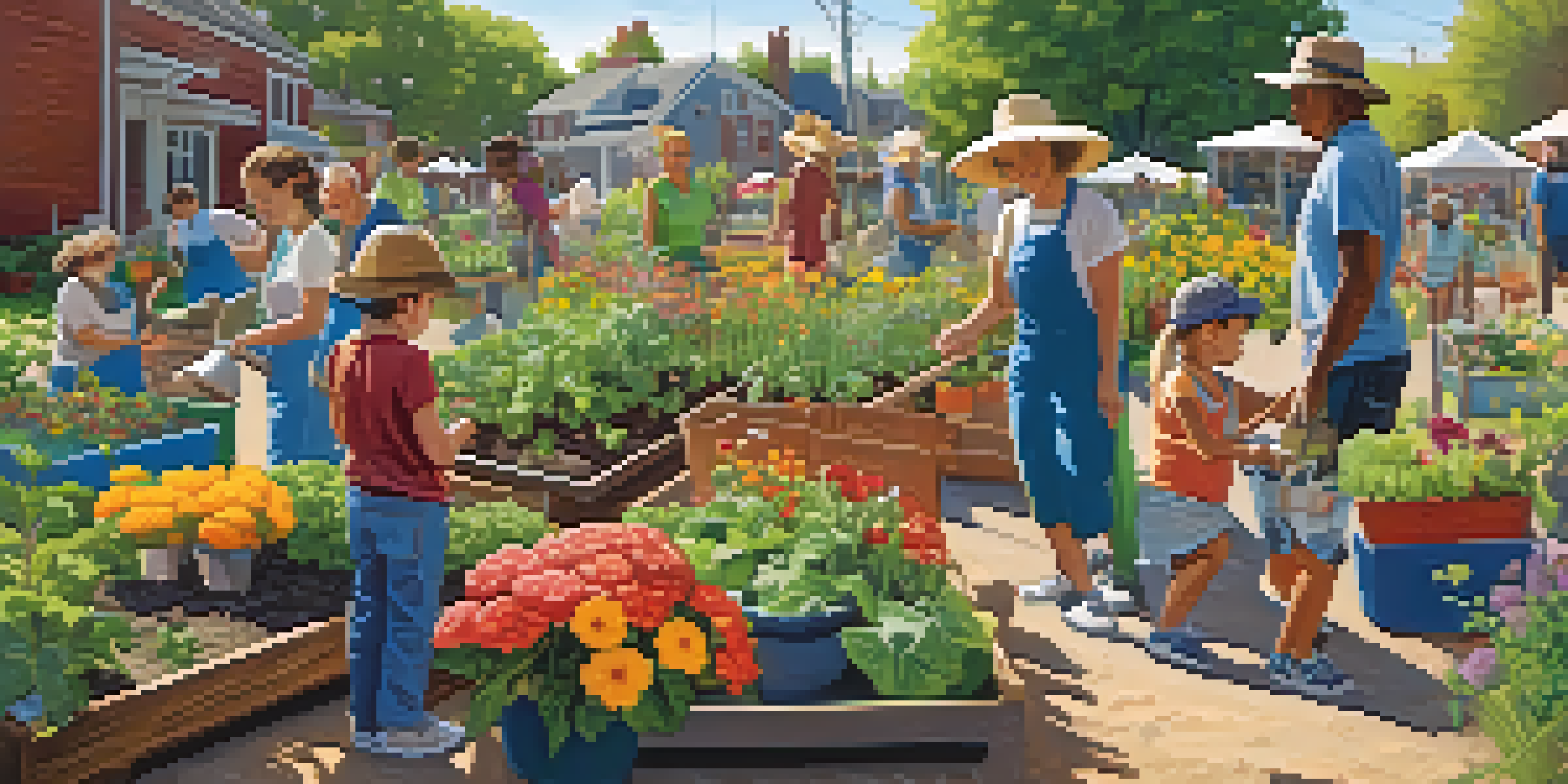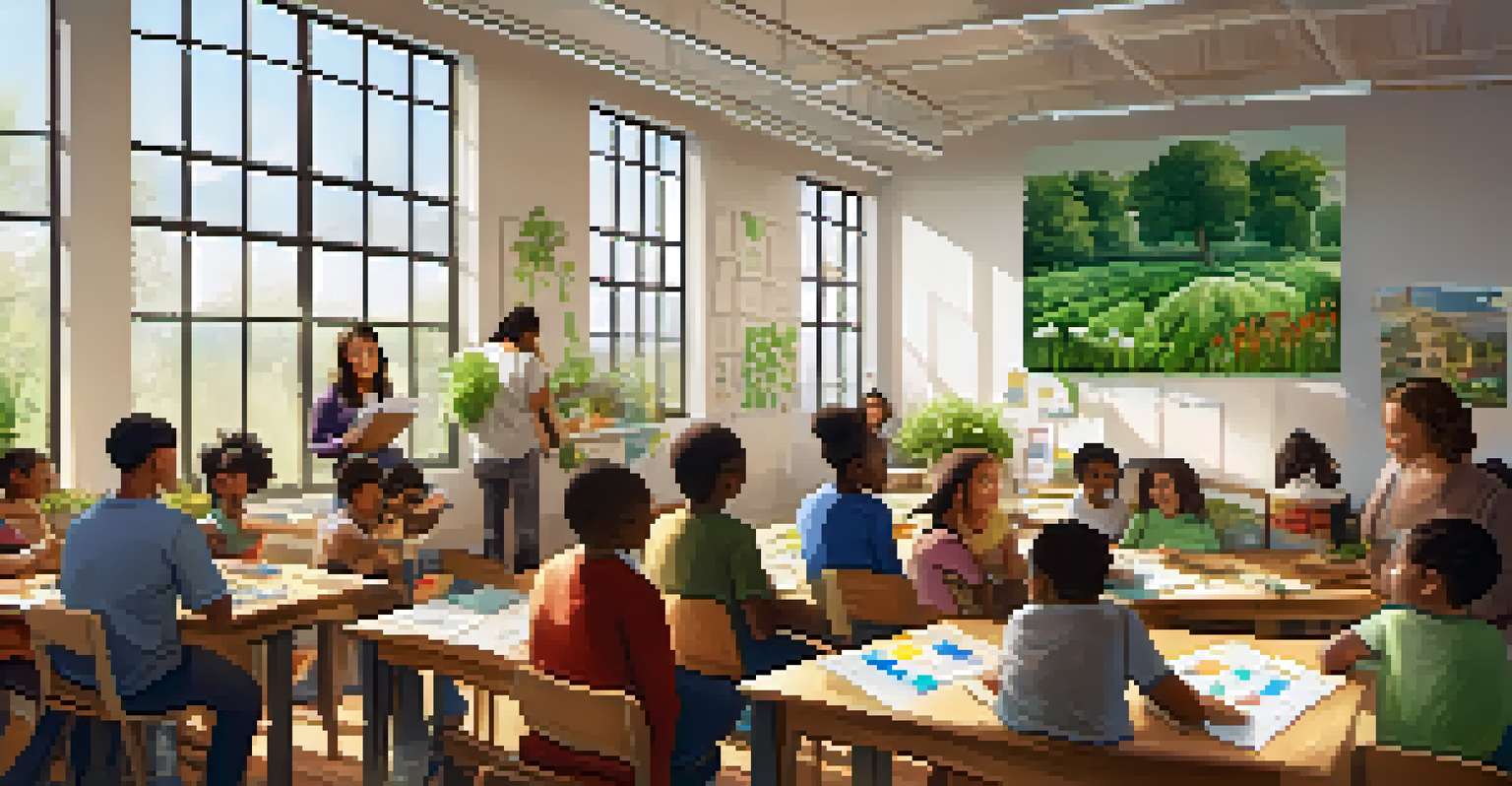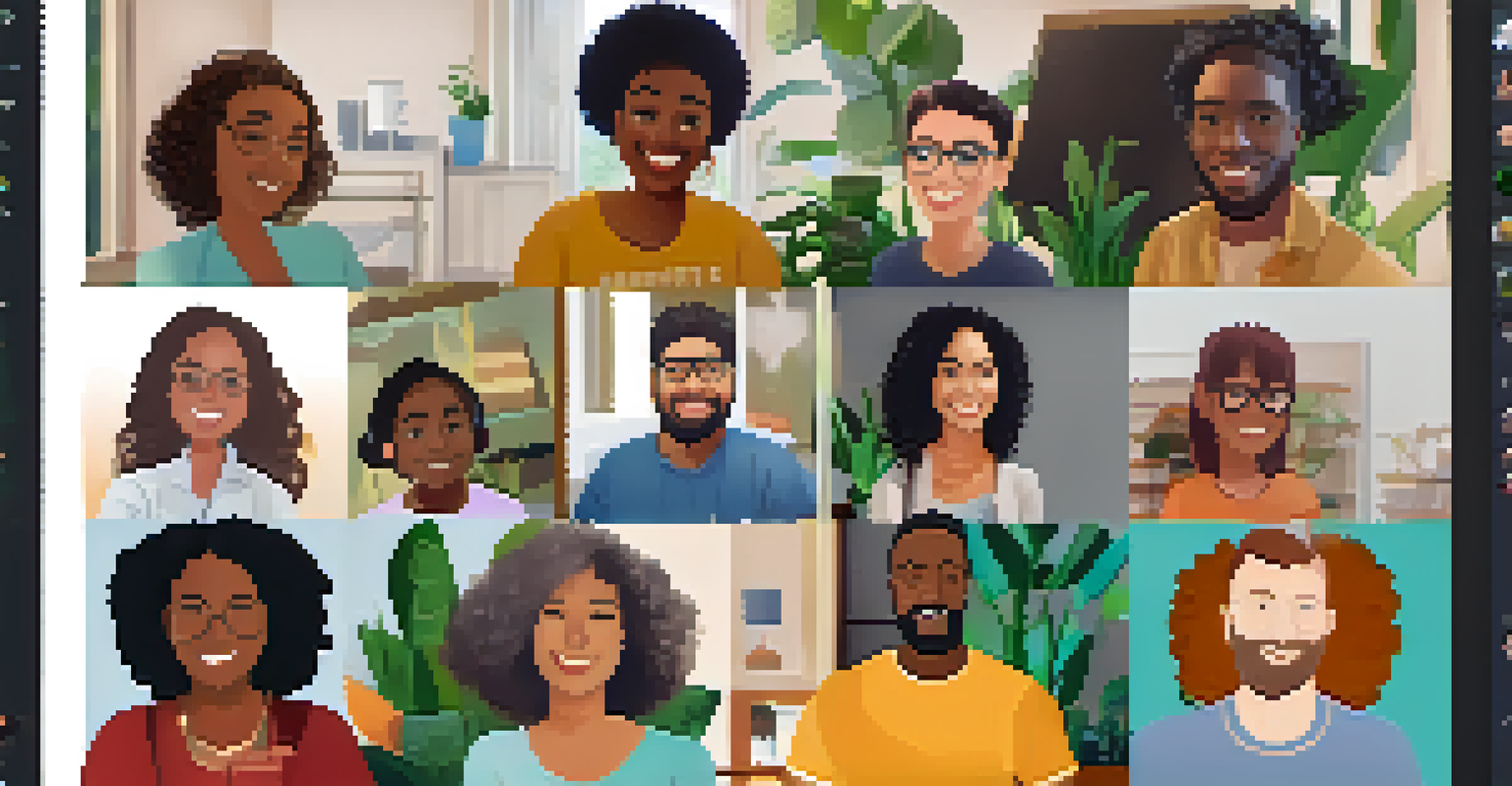The Role of Social Learning in Community Development

Understanding Social Learning and Its Importance
Social learning is the process through which individuals learn from one another, often through observation and imitation. It's a fundamental part of human interaction that shapes behaviors, skills, and knowledge. This learning method emphasizes the importance of social context, where community members share experiences and insights.
The single biggest problem in communication is the illusion that it has taken place.
In community development, social learning serves as a bridge, connecting people with diverse backgrounds and expertise. For instance, a community gardening project allows participants to learn not only gardening skills but also teamwork and resource sharing. Such interactions cultivate a supportive environment where creativity and collaboration thrive.
Moreover, social learning fosters a sense of belonging and identity within communities. When individuals feel connected through shared experiences, they are more likely to engage in initiatives that benefit the community as a whole. Thus, understanding social learning is crucial for nurturing resilient and vibrant communities.
Key Principles of Social Learning in Communities
There are several key principles that underpin social learning, including modeling, reinforcement, and social interaction. Modeling occurs when individuals observe and replicate the actions of others, which is particularly effective in community settings. For example, seeing a neighbor successfully start a composting initiative may inspire others to follow suit.

Reinforcement plays a vital role as well; when community members receive positive feedback for their contributions, it encourages further participation. This cycle of encouragement helps to establish norms and values that support communal goals. Essentially, the more engaged members feel, the more likely they are to continue contributing.
Social Learning Enhances Community Bonds
Social learning fosters collaboration and connection among community members, creating a supportive environment for shared growth.
Social interaction is the glue that holds these principles together. Through discussions, workshops, and shared tasks, community members not only learn from each other but also build trust and camaraderie. This interconnectedness is essential for creating a proactive and sustainable community environment.
Examples of Social Learning in Action
One powerful example of social learning in community development can be seen in educational programs focused on sustainability. In many neighborhoods, local schools engage with families to teach environmental practices. Parents learn alongside their children, fostering a culture of sustainability that extends beyond the classroom.
Alone we can do so little; together we can do so much.
Another example is peer-to-peer mentorship programs, where experienced community members guide newcomers. This not only helps individuals acquire new skills but also strengthens community ties. It’s like passing down a family recipe; each generation adds its unique touch, enriching the community's collective knowledge.
Moreover, community forums and social media groups can facilitate social learning by providing platforms for sharing stories, challenges, and solutions. These digital spaces allow for broader participation, bridging gaps between different demographics and encouraging diverse voices in the conversation.
Barriers to Effective Social Learning
Despite its benefits, social learning can face several barriers in community development. One significant challenge is the presence of diverse communication styles and cultural differences. When community members are not on the same wavelength, it can lead to misunderstandings that hinder effective collaboration.
Additionally, access to resources, such as educational materials or technology, can impact the degree of social learning. Communities with limited resources may struggle to provide the necessary tools for members to engage fully. This disparity can create a divide, leaving some individuals feeling excluded from the learning process.
Technology Boosts Social Learning
Digital platforms facilitate the sharing of knowledge and resources, making social learning more accessible and inclusive.
Lastly, a lack of trust among community members can stifle social learning. If individuals feel disconnected or skeptical of others' intentions, they may hesitate to share their experiences or knowledge. Building trust requires time and effort, but it is essential for fostering an environment where social learning can flourish.
The Role of Technology in Social Learning
In today's digital age, technology plays a pivotal role in facilitating social learning within communities. Online platforms and social media allow for the rapid sharing of information and resources, connecting individuals who may never meet in person. This accessibility can enhance learning experiences and foster broader community engagement.
For example, community members can participate in virtual workshops, webinars, and discussion groups. These tools enable them to learn from experts and each other, regardless of geographical limitations. Imagine a group of aspiring urban farmers sharing tips through a live-streamed session; the possibilities for learning are endless.
Moreover, technology can help document and share community initiatives, creating a repository of knowledge that future generations can access. This collective memory not only preserves past efforts but also inspires new ideas and collaborations. In essence, technology enhances the social learning experience by making it more inclusive and far-reaching.
Strategies to Enhance Social Learning in Communities
To foster effective social learning, communities can adopt several strategies. One approach is to create structured opportunities for interaction, such as workshops, community meetings, and collaborative projects. These gatherings encourage knowledge sharing and help establish connections among members.
Additionally, mentorship programs can be invaluable in facilitating social learning. By pairing experienced members with newcomers, communities can ensure that valuable skills and insights are passed down, creating a supportive environment. This approach not only builds capacity but also strengthens relationships within the community.
Barriers Can Hinder Social Learning
Cultural differences, resource limitations, and lack of trust can impede effective social learning within communities.
Finally, promoting a culture of openness and feedback is essential. Encouraging community members to share their thoughts and experiences can lead to richer discussions and learning opportunities. When individuals feel heard and valued, they are more likely to participate actively, further enhancing the community's collective knowledge.
The Future of Social Learning in Community Development
Looking ahead, the role of social learning in community development is likely to expand as communities adapt to changing circumstances. As issues such as climate change and social inequality become more pressing, collaborative learning will be vital in finding innovative solutions. Communities that embrace social learning will be better positioned to tackle these challenges together.
Furthermore, the integration of technology into social learning practices will continue to evolve. As new platforms emerge, communities will have even more opportunities to connect and share knowledge. This adaptability will be crucial for fostering resilience in the face of ongoing changes.

Ultimately, the future of community development is rooted in the strength of relationships and shared learning experiences. By prioritizing social learning, communities can cultivate environments that empower individuals, enhance collaboration, and drive sustainable change.